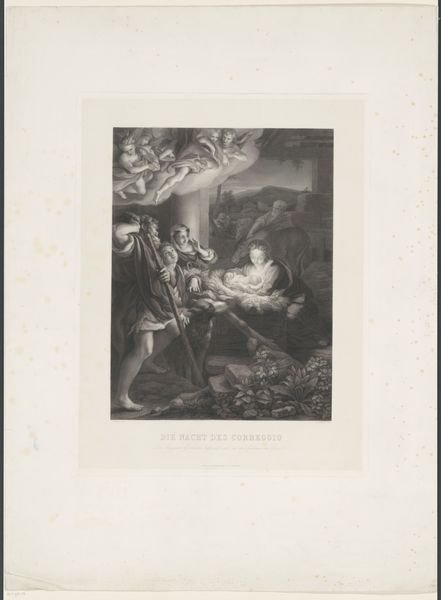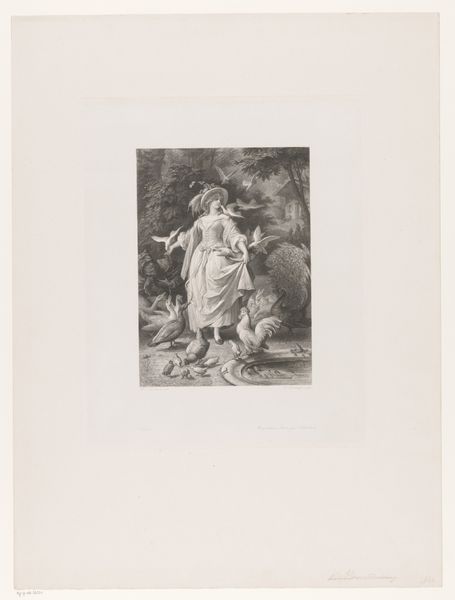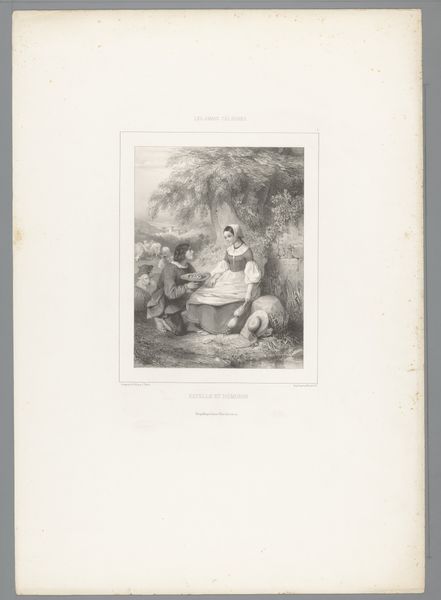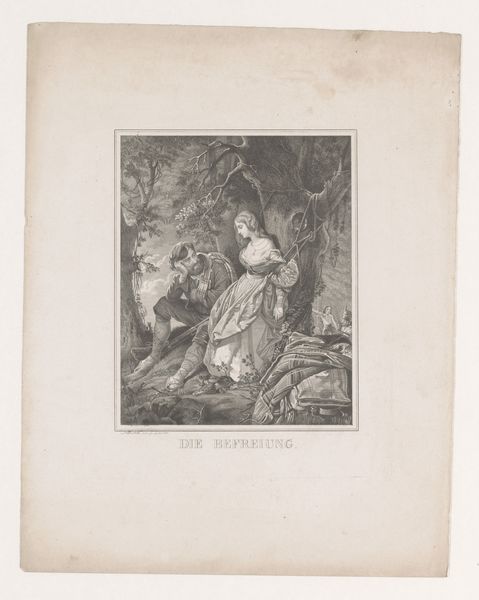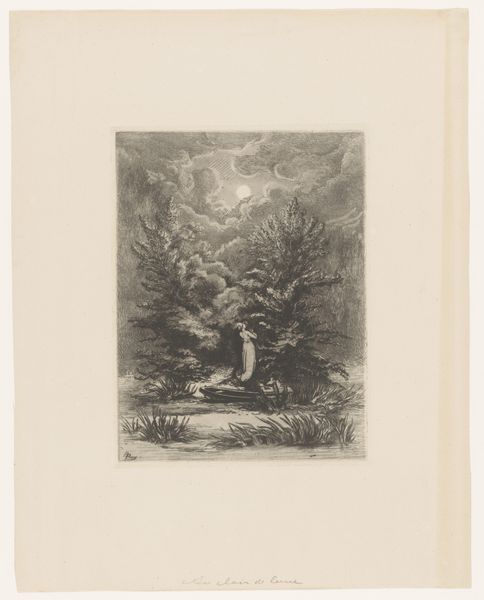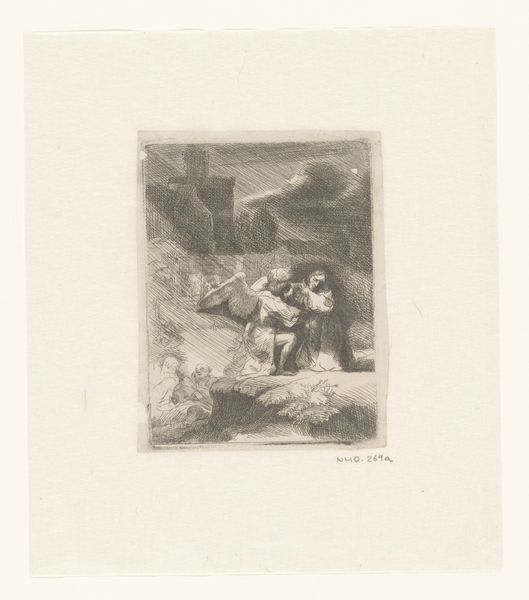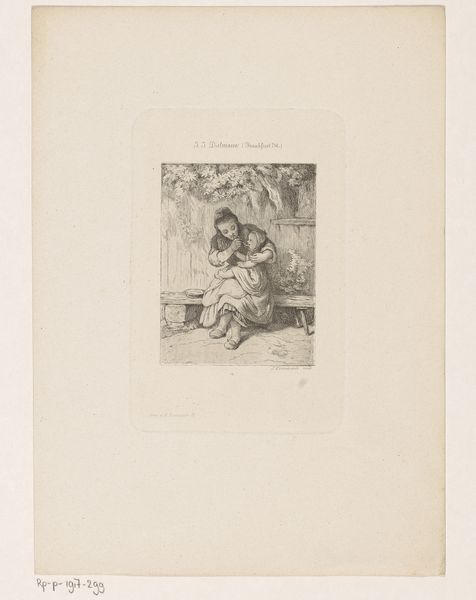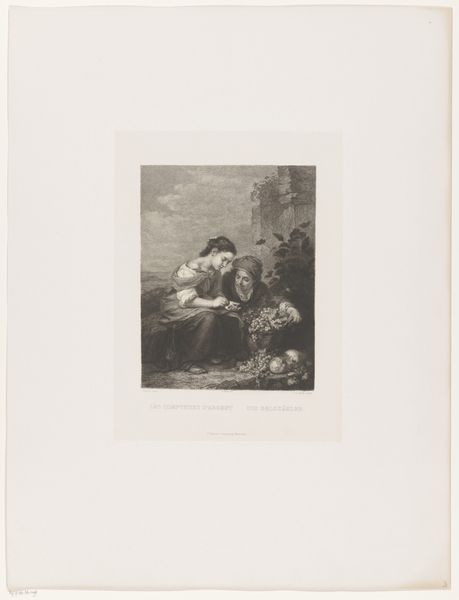
Dimensions: height 434 mm, width 339 mm
Copyright: Rijks Museum: Open Domain
Curator: What we're looking at is an engraving from 1860 by Friedrich Weber. Its title is "Helena in innige omhelzing, wordt bekeken vanuit een rozenstruik" which translates to "Helena in a close embrace, seen from a rose bush." What's your first impression? Editor: It feels almost dreamlike, the way the figures are nestled in the greenery. But also, there's a slightly unsettling voyeuristic quality. We are literally looking in from the outside, through the foliage, on a rather intimate moment. Curator: Absolutely, the piece draws heavily from Romanticism. Weber presents this historical or mythological scene – presumably Helena of Troy, given the title – in a very sentimental and emotionally charged manner. Editor: The fact that we’re positioned, supposedly, behind a rose bush is so loaded. Roses being symbolic of love, passion, but also secrets. And that Cupid figure hovering above, arrow at the ready... It’s all very symbolic isn't it? A little on the nose perhaps. Curator: I think the explicitness reflects its era. It's easy to forget that Romanticism was, in part, a reaction against Enlightenment rationalism. Artists deliberately sought to evoke feeling, sometimes through very obvious symbolism. Also, engravings like this were often made for a wider audience, distributed as prints. Editor: That changes how I think about it. It was meant for mass consumption. But doesn't that idealization, the romanticization of Helen's abduction or elopement – whichever version you prefer – normalize power dynamics we should be questioning? How does that impact the historical context of its consumption? Curator: It highlights the values and aesthetic preferences of the time. Remember, this was an era of increasing nationalism and historical painting often served a didactic purpose, reinforcing certain cultural narratives, however problematic. Weber probably wasn't deliberately setting out to glorify abduction, but he was working within an artistic and social framework that allowed such themes to be presented with a certain degree of acceptance, even allure. Editor: The interplay of light and shadow, typical of the engraving medium, certainly enhances the drama, almost obscuring the darker implications of the narrative within that idealized natural setting. That element of contrast perhaps does reflect certain ambiguities, if one is generous about the historical nuance within it. Curator: Exactly. So, what started as a voyeuristic scene of passion reveals a lot about 19th century society's relationship with history, morality, and image-making. Editor: A deceptively simple image revealing complex perspectives from the vantage point of history, as well as our present.
Comments
No comments
Be the first to comment and join the conversation on the ultimate creative platform.
